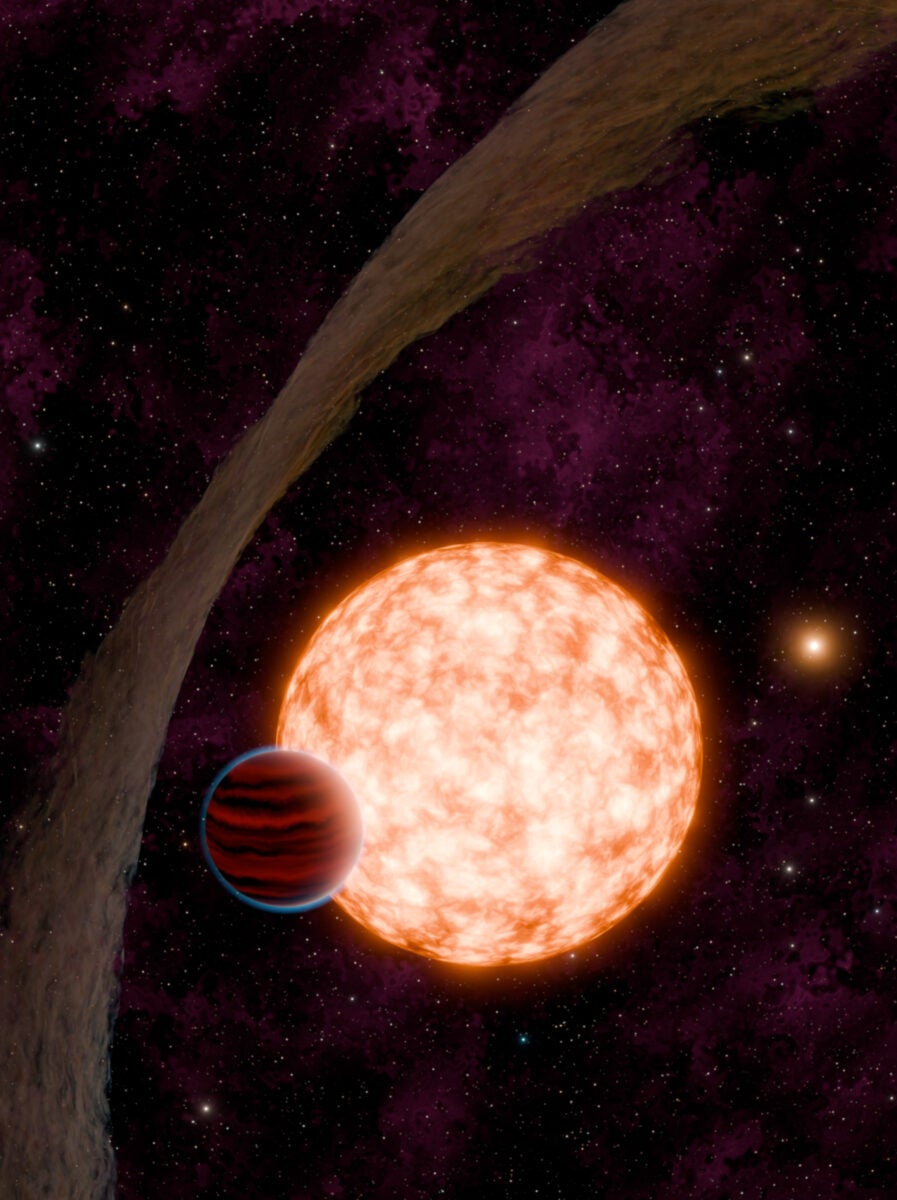
Not so far from Earth, an infant planet is just getting its start at life. And by peeking beneath the thick cocoon of material surrounding it, astronomers could be getting a rare chance to watch a world for which our solar system has no equivalent settle into its early life.
The planet closely orbits the star IRAS 04125+2902, which is about 520 light-years away. The star is very young, about 3 million years old, and only some 70 percent of the mass of the Sun. Its young age means its protoplanetary disk — the thick shroud of dust and debris that forms the building blocks of planets — hasn’t fully been shed.
In this disk, astronomers witnessed something never seen before — a transiting exoplanet. (Transiting planets are those that appear to pass in front of their parent stars from our point of view.) The astronomers have nicknamed it TIDYE-1 b, derived from “TESS Investigation – Demographics of Young Exoplanets.” Madyson Barber, a graduate researcher at the University of North Carolina at Chapel Hill, says the odd nickname is “an alternative to IRAS 04125+2902 b (which is a mouthful).”
Barber and colleagues published the planet’s discovery today in Nature.
Wrapped up
Not only is TIDYE-1 b a baby planet, but it may turn into a type of planet we don’t have in our solar system,called a sub-Neptune. Sub-Neptunes (and their related siblings, super-Earths) are objects with masses between that of Earth and Neptune, and astronomers are still trying to piece together quite what they look like. Depending on their mass, they may look like a mini-ice giant (sub-Neptune) or a huge terrestrial planet (super-Earth).
Related: Where is our solar system’s super-Earth?
TIDYE-1 b won’t reveal its true nature in our lifetime. It is still shrouded in the hydrogen envelope that often surrounds embryonic planets, which gives it a current mass of around 0.3 Jupiter’ masses — something closer to a mini-Saturn, weight-wise. But because a planet of that mass still wrapped in a hydrogen envelope is bound to shed those outer layers over time, the actual planet will be a lot smaller in its teenage years.
“This mass is inconsistent with the mature hot Jupiter population [massive gas giants circling close to their stars], and young planets are thought to shrink with age, so we think the planet will likely end up in that 2- to 4- Earth radii range once it has finished evolving,” Barber says.
Fast development
That the planet could be seen at all was a fairly impressive discovery. It would be a difficult undertaking under most scenarios to peer into a protoplanetary disk, given that it’s like trying to spot the stars in the sky on a very cloudy day. But the disk around the planet’s parent star is just slightly misaligned, and this allowed the team to catch glimpses of TIDYE-1 b.
Barber says that the planet shows that some exoplanets can form rather quickly, as TIDYE-1 b is in a “cohesive form” in a little less than a third of the time it took our Earth to form. This could partly be its proximity to its star — the planet completes an orbit of IRAS 04125+2902 in 8.83 days.
It likely didn’t form there, Barber says, but rather migrated in, as “It’s hard to form large planets close to the star because the disk dissipates away from closest to the star first, so there’s not enough material there to form large planets that quickly.”
There is no evidence (yet) for more planets in the system, but there could be others there. Meanwhile, Barber says TIDYE-1 b’s large radius and low mass could make it an ideal candidate for follow-up observations with the James Webb Space Telescope (JWST). JWST can see in infrared, which is where young, hot worlds glow brightest, so it could scrutinize the exoplanet and discover more about its composition and how it formed.
Barber’s thesis research focuses on learning more about young exoplanets that transit their stars, so TIDYE-1 b is a perfect fit for her work. The next youngest planet in her dataset, Barber says, is about 10 million years old. “I’m hoping our survey will bump up this number to enable statistical comparisons of planets across ages,” she says.









